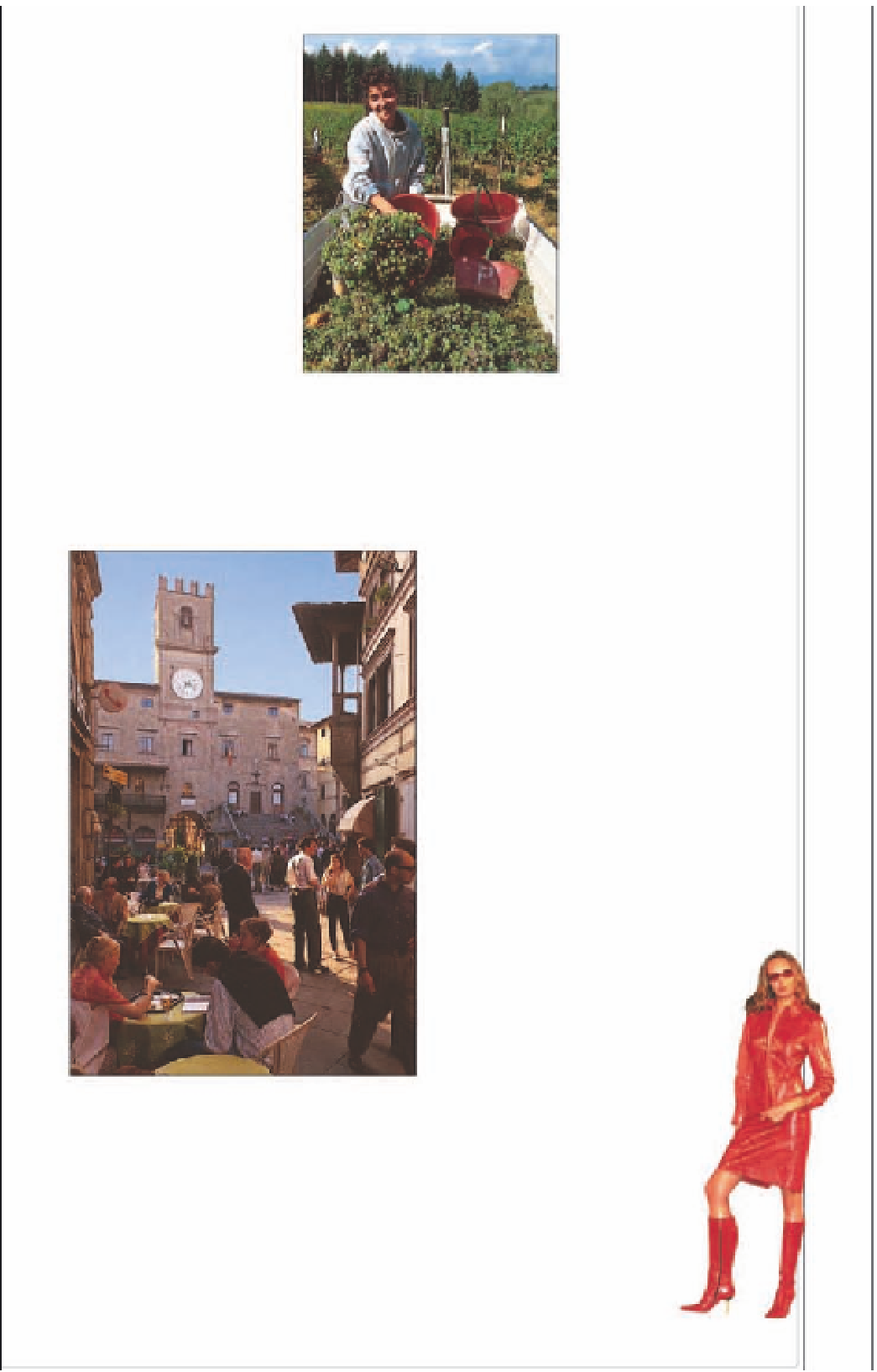Travel Reference
In-Depth Information
family lunch. After the
burst of activity that
marks the beginning of
the day, Tuscan towns
adopt a more sedate
pace. New building is
prohibited inside their
walls, so that very many
people of school or
working age travel out,
by bus or car, to schools,
offices or factories in the
suburbs, leaving the old
centres to visitors.
Some of the larger towns, particularly
Pisa, Lucca, Florence and Siena, have
resisted this tide, determined not to
become museum cities given over
entirely to tourism. They have thriving
often graduates of the
renowned local univer-
sities: Pisa, Siena and
Florence. For the great
majority of Tuscans,
however, the working
day is spent in purpose-
built suburbs, such as
the one linking Prato
to the Firenze Nuova
(New Florence) sub-
urbs west of the city.
The Tuscan economy,
however, still remains
firmly rooted in craft traditions. Top
designers from Milan use the textile
factories of Prato and Florence for the
execution of their designs. Gold-work-
ing is not confined to the Ponte
Vecchio workshops in Florence -
Arezzo produces jewellery which
is sold throughout Europe.
The grape harvest in Chianti
THRIVING EXPORTS
Glass, marble and motorcycles are
among Tuscany's most important
industrial products, while its olive oil
and wine are exported worldwide.
This explains why Livorno, Tuscany's
port, is the second busiest in Italy,
while Pisa's Galileo Galilei airport is
rapidly becoming a major air-freight
distribution centre.
Individual Tuscan artistry can
best be admired in the heart of any
Tuscan town during the evening
promenade - the
passeggiata
.
One moment the streets are
empty, the next they are filled
with elegant people strolling
and chatting. The skill of
fare bella figura
(“looking
good”) is so prized that vis-
itors will be judged by the
same standard. It is an
opportunity for you to join
in the inherently Tuscan
aspiration to create
a civilized world.
The hour for relaxing in Cortona
service sectors, testimony to the same
Tuscan flair for banking, insurance
and accountancy that made the Medici
family and the “Merchant of Prato”
(see
p188)
some of the richest people in
their time. It is, however, the lucky
few who work in such beautiful towns.
They practise as lawyers, architects,
conservationists or designers and are
Italian chic, or
bella figura
































